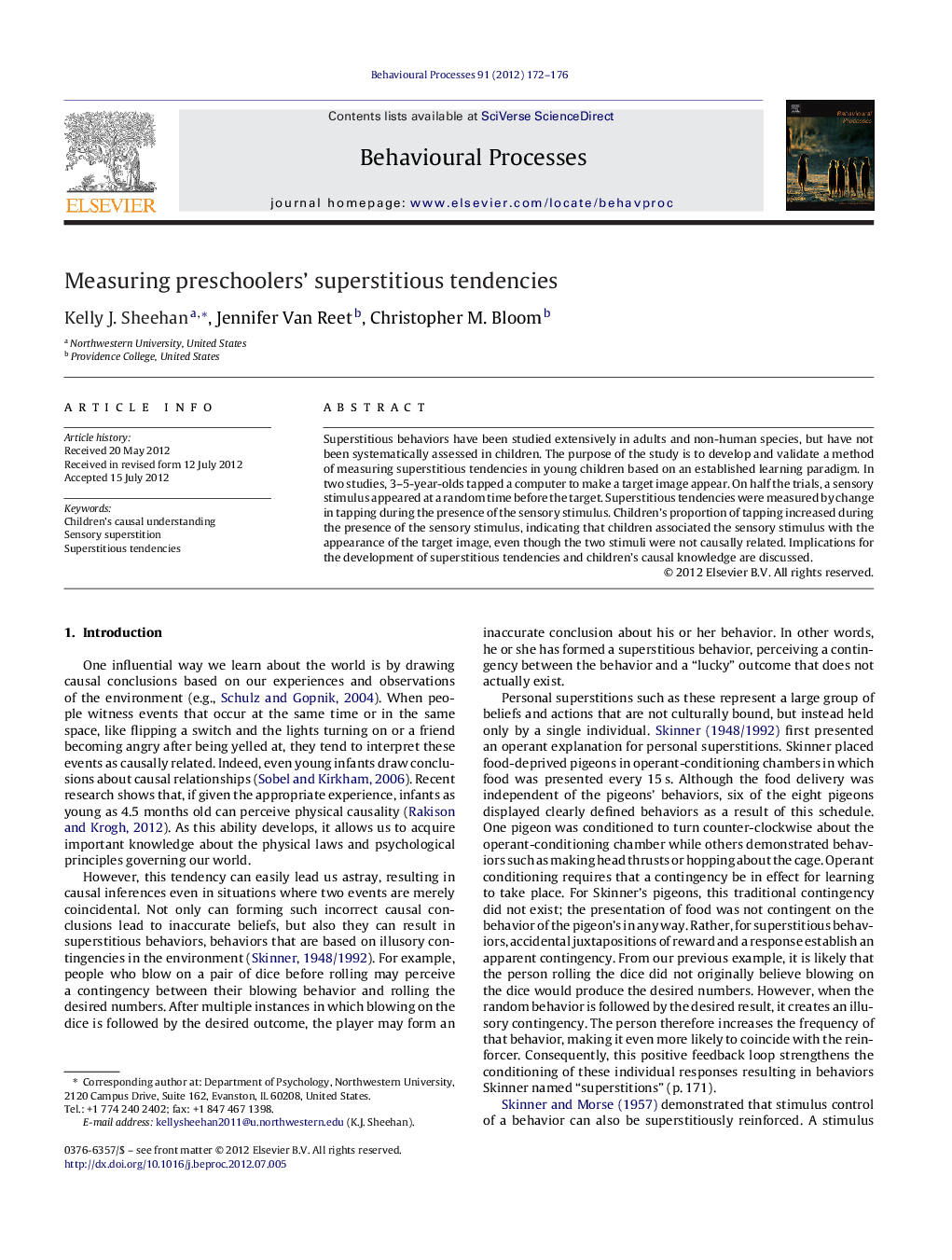| Article ID | Journal | Published Year | Pages | File Type |
|---|---|---|---|---|
| 2426991 | Behavioural Processes | 2012 | 5 Pages |
Superstitious behaviors have been studied extensively in adults and non-human species, but have not been systematically assessed in children. The purpose of the study is to develop and validate a method of measuring superstitious tendencies in young children based on an established learning paradigm. In two studies, 3–5-year-olds tapped a computer to make a target image appear. On half the trials, a sensory stimulus appeared at a random time before the target. Superstitious tendencies were measured by change in tapping during the presence of the sensory stimulus. Children's proportion of tapping increased during the presence of the sensory stimulus, indicating that children associated the sensory stimulus with the appearance of the target image, even though the two stimuli were not causally related. Implications for the development of superstitious tendencies and children's causal knowledge are discussed.
► Preschool-age children performed a sensory superstition task on a computer. ► Measured superstitious tendencies by change in behavior during the sensory stimulus. ► In two studies, tapping behavior on computer increased during sensory stimulus. ► Elicited superstitious tendencies in 88% and 89% of participants.
